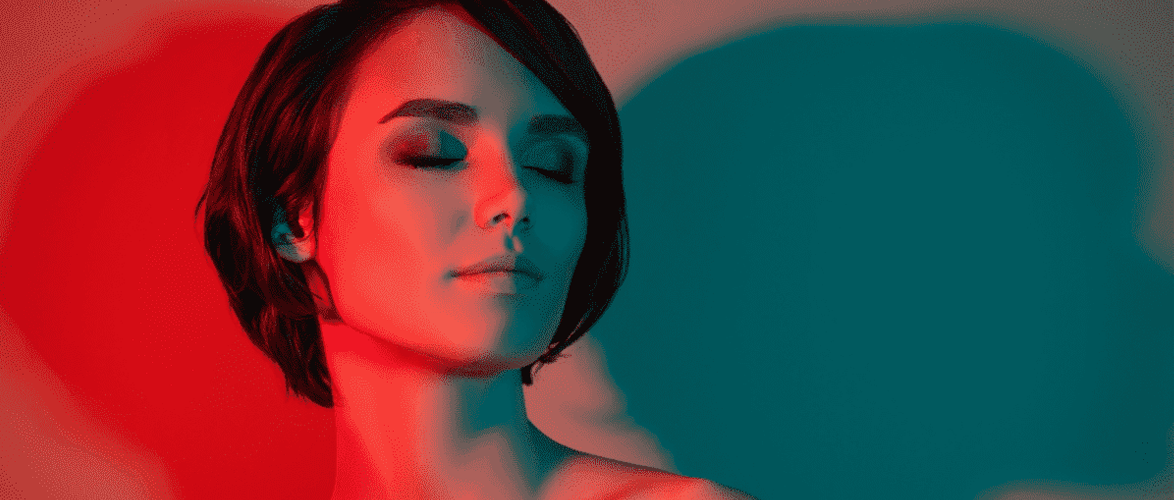
- Posted on
- By Justin Vorwaller, MBA
- In Light Therapy ROI, Red Light Therapy
The Difference Between Full-Body and Targeted Red Light Therapy
Red light therapy (RLT) offers many health and wellness benefits. Yet, it's essential to consider how you use this technology to gain the full benefits. Some treatments involve full-body red light therapy, while others take a targeted approach.
These two approaches to photobiomodulation therapy have different purposes. Knowing more about these can help you achieve the best outcomes for you.
Full-Body Red Light Therapy
Full-body RLT is done with a bed that uses red and near-infrared light. Exposure to sunlight helps activate positive cell changes, bringing various health benefits. You might use the full body type of RLT to improve broad health measures like:
-
Enhancing Sleep: Full-body RLT can positively impact sleep patterns, helping individuals achieve better rest and sleep quality.
-
Mood Improvement: It has the potential to uplift mood and alleviate symptoms of conditions like seasonal affective disorder (SAD) and depression.
-
Inflammation Reduction: Reducing inflammation throughout the body is another advantage, benefiting those with chronic inflammation issues.
-
Pain Management: Individuals experiencing pain for various reasons, including chronic conditions or physical injuries, may find relief through full-body RLT.
-
Sports Performance: Athletes often use full-body RLT to enhance their performance, aid muscle recovery, and reduce post-workout soreness.
You can immediately gain exposure to your full body by using a red light therapy bed, which provides specified treatment without getting too hot. Receiving RLT for the whole body allows the healing wavelengths to enter as much surface area as possible to provide maximum benefits.
This increased exposure can encourage cellular changes that support your body's processes against oxidative stress, inflammation, and other damage throughout the body, including issues you may not be aware of. Also, total exposure can help on a systemic level within the body to promote better circulation and sleep.
Full-body RLT helps promote overall health and wellness, whether or not you're trying to target a specific health concern. Further, full-body RLT may provide faster results because of the increased exposure to healing wavelengths.
A downside of this method is that you may have occasions to focus the light on specific parts of the body to target inflammation or wounds. In this case, you may want to use targeted RLT instead. Nonetheless, a bed like Theralight can bring this technology within reach and help clinics offer this treatment to their clients.
Targeted Red Light Therapy
Targeted Red Light Therapy (RLT) can be performed using a laser device, panel, or a portable handheld device that enables you or a practitioner to concentrate on a specific area of your body. This allows you to target the red light in particular ways, such as:
-
Facial Rejuvenation: Dermatologists use targeted RLT to address wrinkles, hyperpigmentation, and other facial skin imperfections.
-
Wound Healing: When applied directly to wounds, it can expedite healing, promoting tissue repair.
-
Pain and Inflammation Management: Targeted RLT is effective for localized pain relief and inflammation in specific areas like joints or injuries.
One popular application of the targeted approach is in skin care. Dermatologists and other skin care professionals use this method to reduce hyperpigmentation, wrinkles, and inflammation from severe acne. Nonetheless, this approach can also target specific body parts to address arthritis, an injury, joint pain, or another location-specific concern.
These targeted treatments can be beneficial, offering higher-powered laser treatment to specific body parts. A downside to this treatment is a lack of standardization in light dosage for particular applications. Incorrect dosage can lead to skin tissue overheating (too high) or ineffective treatments (too low). Also, the cellular change potential is limited by only directing the light wavelengths at small portions of the body.
Targeted vs. Full Body Red Light Therapy
You can see that both types of RLT devices provide the benefits of this modality. They offer red and near-infrared wavelengths that stimulate cell energy transport through mitochondrial activation to carry out healing processes. The two methods vary in the surface area they cover at one time.
It's possible to use both types of RLT to complement one another. You may turn to a bed for full-body red light therapy to provide overall wellness and healing throughout the body. Then, a handheld device may work better for targeted treatments for specific problem areas, such as joints. A benefit of both types is that you can often combine this non-invasive therapy with other forms of treatment. Also, they can be customized to provide the proper treatment needed for each situation.
Benefits of Full-Body Red Light Therapy
-
Comprehensive Wellness: Full-body RLT offers holistic wellness benefits. It can simultaneously positively impact sleep, mood, inflammation, pain, and sports performance, making it a versatile choice for overall health improvement.
-
Efficient Exposure: With full-body RLT beds, you can efficiently expose your entire body to healing wavelengths. This extensive exposure promotes cellular changes throughout the body, combating oxidative stress and inflammation.
-
Faster Results: Due to the increased exposure to healing wavelengths, full-body RLT may yield more immediate results when compared to targeted therapy for specific concerns.
Drawbacks of Full-Body Red Light Therapy
- Lack of Specificity: Full-body RLT treats the entire body, which may not be necessary if you're primarily focused on a specific issue. This lack of specificity can be a drawback when targeting localized concerns.
Benefits of Targeted Red Light Therapy
-
Precision: Targeted RLT allows for precise treatment of specific areas or concerns. This precision is particularly beneficial when addressing localized problems like wrinkles, wounds, joint pain, or injuries.
-
Concentration of Power: Devices in targeted therapy can deliver higher-powered laser treatment to specific body parts, potentially accelerating the healing process.
-
Versatility: Targeted RLT can address various issues, from skincare to pain management, making it a versatile choice for localized concerns.
Drawbacks of Targeted Red Light Therapy:
-
Dosage Control: Achieving the correct dosage is crucial in targeted therapy. Incorrect dosage can lead to skin tissue overheating or ineffective treatments. Proper training and guidance are necessary to avoid these pitfalls.
-
Limited Coverage: Targeted therapy only addresses the areas where the light is applied. It may not offer the systemic benefits of full-body RLT, which affects the entire body.
To determine the best approach for your situation, consult a red light therapy provider. They can assess your needs, guide you on combining RLT with other treatments, and create personalized care plans to address specific concerns effectively. Understanding the benefits and drawbacks of each approach empowers individuals to make informed decisions about their well-being.
Related Topics:
Why You Need a Good Night's Sleep & How Red Light Therapy Can Help
A Guide to Red Light Therapy Devices
The article was originally published December 14, 2021, and was last updated September 11, 2023.

